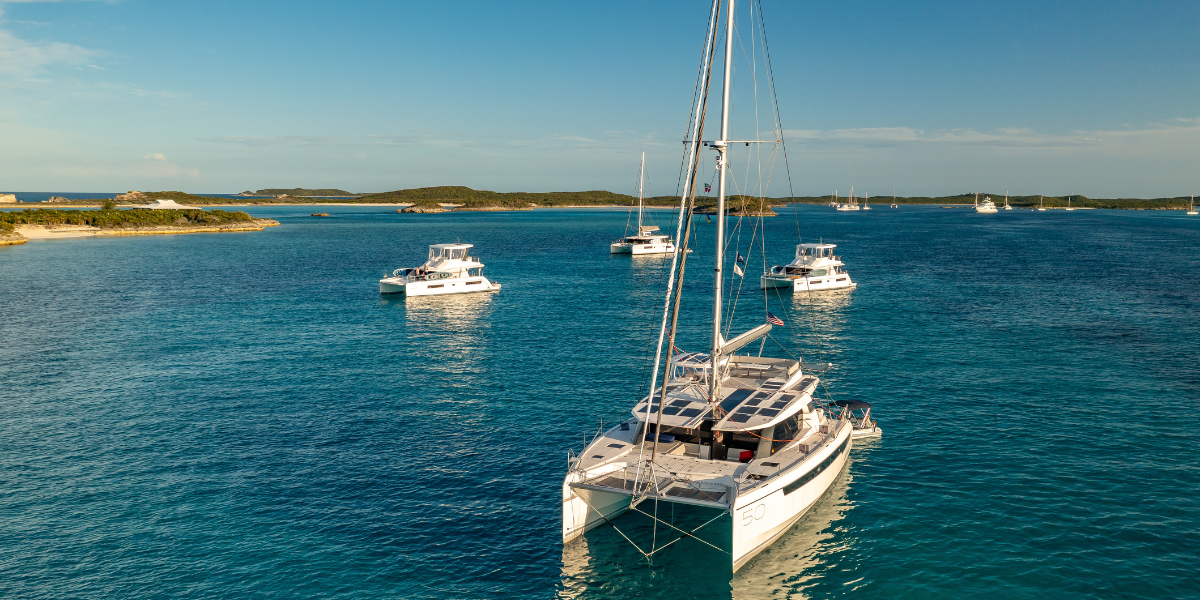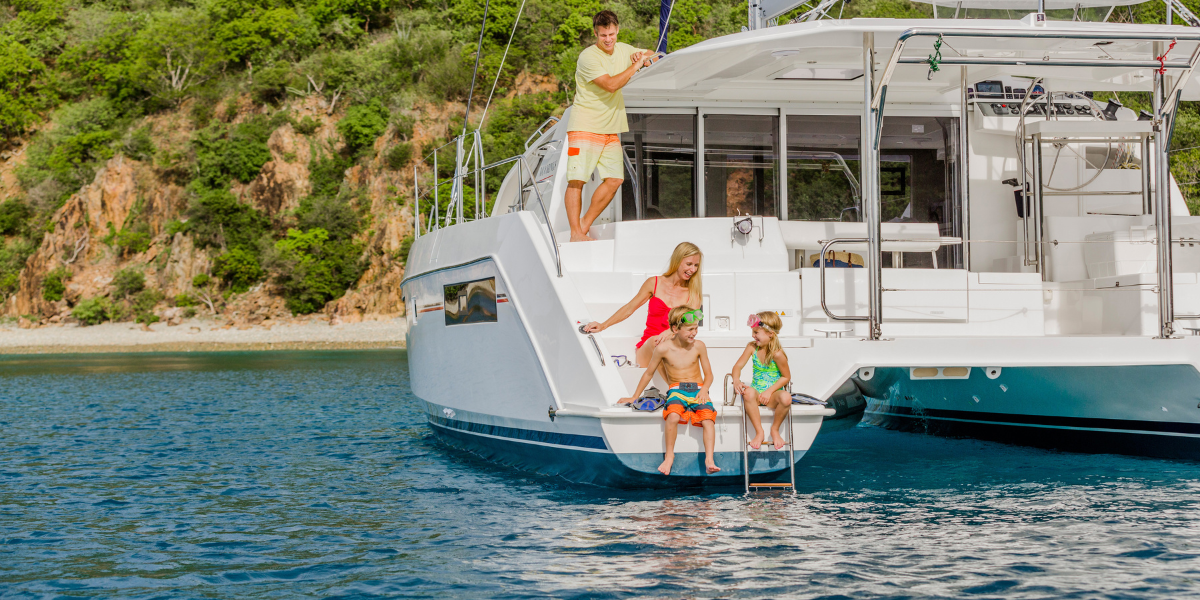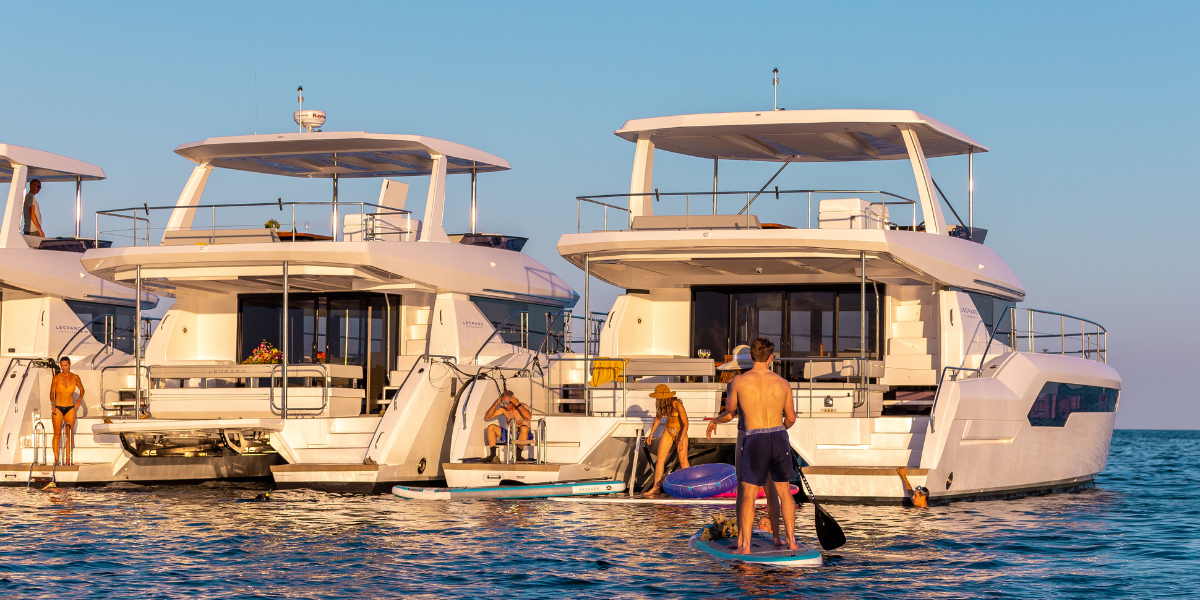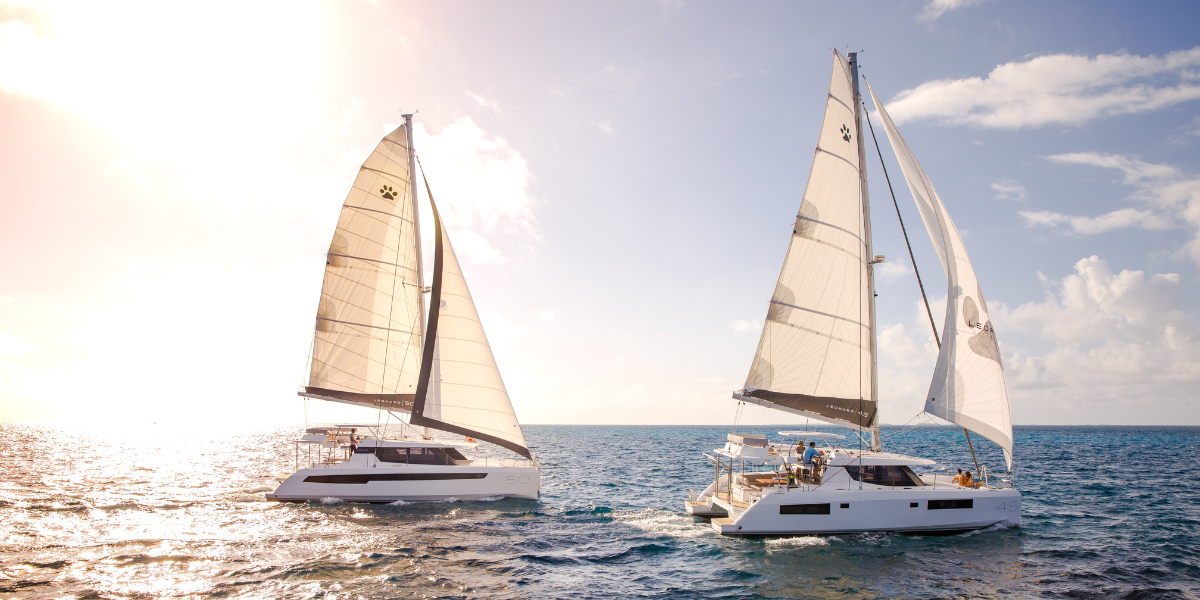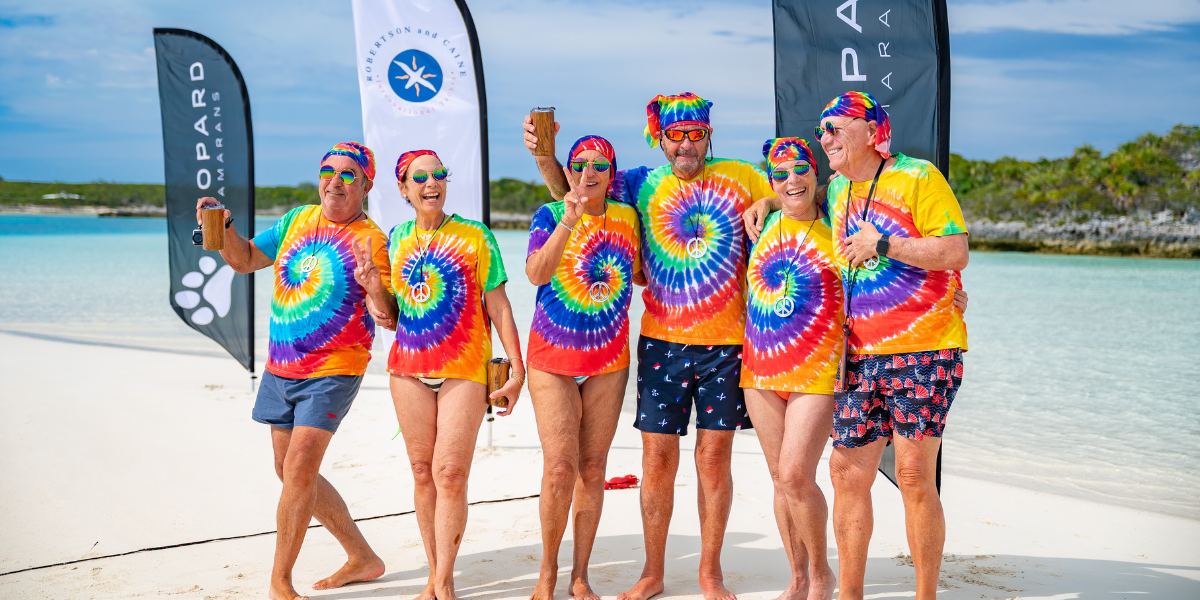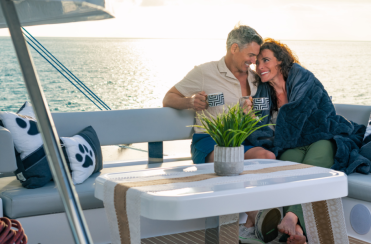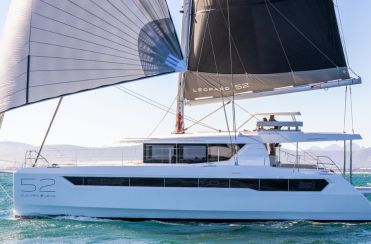As the sun dips towards the horizon, the dinghies start pulling up. Cruising couples and singles come aboard with cold drinks and appetizers to share. Conversation and laughter grow as the evening approaches. Everyone pauses for a moment to look for the green flash. Good friends enjoy a few laughs and stories before people head back to their own boats. “Sundowners,” that almost nightly ritual in the cruising community, is always better with company.
Sailing as a couple is an amazing memory-making machine. Cruising with fellow boat owners, or “Buddy Boating,” is also another great way to experience the world. It’s more than just sharing a cockpit for a drink at the end of the day. Heading ashore for errands or adventure and spending time around cruising friends adds a whole new dimension to your travels.
Styles of Buddy Boating
There’s no right way or wrong way to cruise with other boats. How you choose to buddy up depends on personalities and interests, the boats and how they sail, and the owners’ comfort levels sailing in various conditions.
Some groups prefer to sail together in tight groups. They leave together and stay in close touch throughout the trip. They’ll slow down to keep buddy boats on the horizon, favor each other on the AIS, and stay in regular contact throughout the day on the VHF. Even if they leave at different times, they plan to arrive at their destination at roughly the same time. Usually in time for sundowners, of course.
Other groups are more casual, with plans no more specific than “We’ll see you after next Tuesday in Falmouth.” These buddies sail on their own for a few days, then hook up again at an agreed spot. It doesn’t matter if one boat shows up on Sunday and another shows up on Tuesday after making a side trip. You catch up and spend a few days together while planning the next leg of your adventure.
Companion boats usually anchor near each other for easy traffic between boats. There may be a constant flow between boats as friends meet up for shared activities on and off the water. Dinghy rides into town, trips to the beach or markets, or just dropping by for morning coffee all make an anchorage feel like a neighborhood.
Kid Boats and Finding Friends
Cruisers with children often look to buddy boat with people who have kids about the same age. Kid boat schedules run a little differently, usually with school in the morning and the kids taking off to find each other in the anchorage when work is done. Cruisers with kids often congregate in popular cruising anchorages, like Georgetown in the Bahamas or Mt. Hartmann Bay in Grenada, where they can all make new friends.
Once they find each other, they’ll stay in loose touch for months while moving between anchorages, connecting again and again.
Find Your Group Style and Common Interests
When considering a buddy boat adventure, it’s important to find a style that works for everyone in the group. More independent-minded cruisers, for example, may bridle at too many rules and requirements.
And remember to consider people’s interests when building a buddy flotilla. A hard-core diving boat coupled with a group of ardent beachgoers or shoppers may not be a great match as their preferred destinations won’t always be compatible.
That doesn’t mean you can’t cruise together. You just need more flexibility in how you cruise and reconnect. Splitting up for a couple of days in between destinations to pursue individual passions may work better than sticking together in a tight fleet from port to port.
Making Plans and Sailing Together
A fixed schedule can be the most dangerous thing to keep on a boat. To ensure everyone’s safety, you must consider the capabilities and comfort level of all members of a flotilla. Everyone needs scheduling flexibility to deal with difficult weather and sailing conditions. “Next Tuesday” shouldn’t mean “next Tuesday” if bad weather settles in.
Birds of a Feather
A Leopard 44, 46, and 50 cruising together don’t have many issues planning. While there are speed differences, the boats are similar enough that you can sail in a pretty tight group.
Of course, other boats in your flotilla might sail at different speeds. If you try to keep those folks on the horizon all day, all of you will get frustrated. They’ll feel pressed to sail hard to keep up, and you’ll have to keep the sails reefed and the brakes on. And that’s not much fun when you have a good breeze. With a disparate group of friend boats, a looser structure lets you include more people.
Staying in Touch
Communication is key to buddy boating. But communication isn’t always easy on a boat. Cell phones are less reliable while sailing, VHF radio has limited distance, and the internet can be spotty, although that is changing with the availability of Starlink. And not everyone has everything turned on all the time for real-time communications.
Your ship’s VHF radio will be your primary group coordination tool. Unlike a cell phone, you can reach the entire group at once, and everyone nearby can hear the conversation. If you’re too far apart for VHF but have the equipment, single sideband radio (SSB) covers longer distances. Starlink can also close the distance by facilitating group chats. Otherwise, you’re leaning on phones and e-mail when you’re not in the same anchorage.
Digital Selective Calling (DSC) is a powerful radio tool for group traveling. Most radios – VHF and SSB – have DSC capabilities, though many operators aren’t aware of their full power. In addition to being an important safety tool, DSC allows direct calls between individuals and groups of boats. Unlike a regular VHF hail, the direct DSC call is private. So the whole anchorage doesn’t know you’re making plans and what they are.
If you take the time to set your cruising buddy boats up in your DSC address book, you can talk to the fleet in a single private call. In addition, you can request position updates automatically to see where everyone is, and send updates on your own status and position to everyone.
Call or Write
Cell coverage can be spotty when cruising, and not all international roaming works as expected. The advent of Starlink solved many of those headaches by allowing for reliable internet connectivity, including wifi calling, WhatsApp group chats, and even group video calls. Satellite phones are another reliable option, but satellite calls can get expensive as a regular way to make plans about who is bringing what to sundowners!
The advantage of e-mail and messaging for group communication is you don’t have to have the device on to get the message. If your group is offline or offshore, they’ll get the messages when they get a signal. Group emails and chats are a good way to plan with boats scattered across the islands.
Keep it Fun
Traveling together should not be onerous, and a rigid schedule of check-ins and a tight calendar can be too much for some. The point is to keep it friendly and social, so you can enjoy everyone’s company without intruding on your individual sailing experience.
Your groups may change over time, and you’ll meet lots of new friends on the water. And with a little planning, you can enjoy those friendships across the world.
